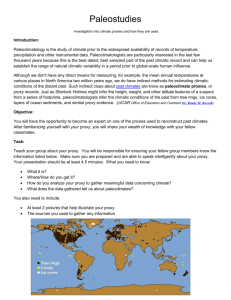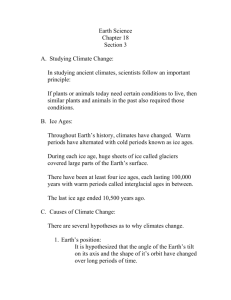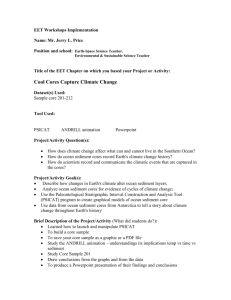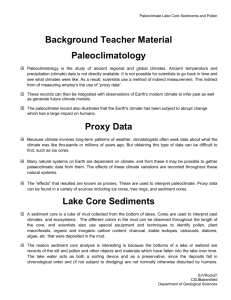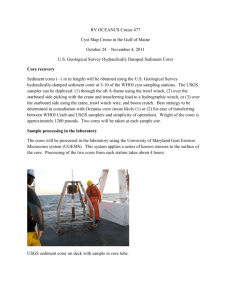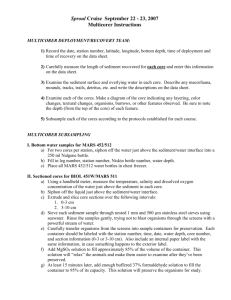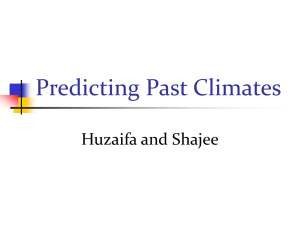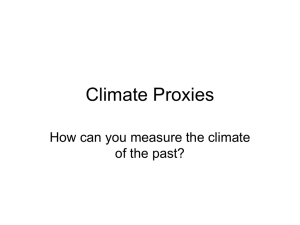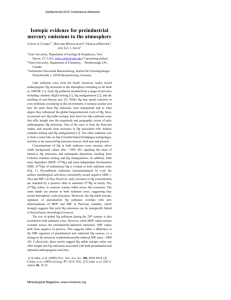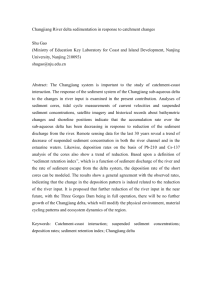Climate Proxy PowerPoint
advertisement
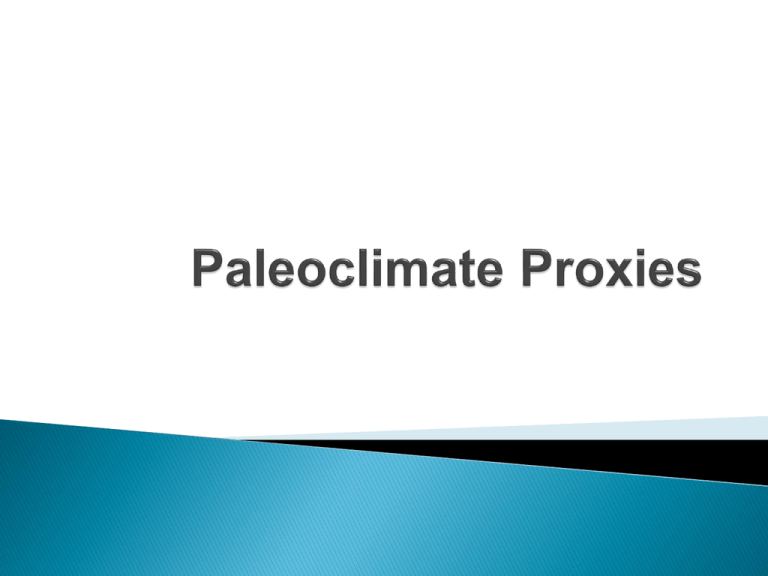
The study of past climates prior to the instrument record. Scientists use indirect evidence (data) during past time periods to determine the climate at that time period. These climate imprints are referred to as proxies. It may help us to understand natural climate changes. The study of past climates may give us information into future climate scenarios. Warm Cold Warm Satellites Historical Proxy Records Ancient Proxy Records Instrument Record The instrument record extends back about 150 years (~1860). Since that time Earth’s temperature has increased 0.7 °C (1.3 °F). In the past, climates were sometimes much colder than today. At other times they were much warmer than today. Tree Rings Sediment Cores Pollen Examples of Climate Proxies Stable Isotopes Ice Cores Coral Reefs Weather and climate observations can be found in ships logs, farmers’ diaries, newspaper accounts, and other written records. Sediment cores can be taken from lakes, the shallow ocean, or the deep ocean. In some cases the thickness of these layers can be used to infer past climate. In other cases, these layers are composed of organic material that can be analyzed for other climate proxies. Pollen grains are well preserved in lake and ocean sediment. The analysis of each of these sediment layers provides information on the vegetation present at that time. Scientists can infer past climates (warm or cold) based on the distribution and changes in plant species. The most common element used in climate studies is oxygen. The isotopes of oxygen are: ◦ O18 (rare) ◦ O17 ◦ O16 (common) The ratio of O18 to O16 is affected by temperature and can be used as a climate proxy. Corals are composed of calcium carbonate. This carbonate contains isotopes of oxygen that can be used to determine the water temperature when and where the corals grew. As snow and ice accumulate in polar glaciers a paleoclimate record accumulates of the environmental conditions of the time of formation. Ice cores can analyzed using stable isotope approaches for water or air bubbles within the ice as a record of past atmospheric gas concentrations. Tree growth is influenced by climate. These patterns can be seen in tree ring width and isotopic composition. Trees generally produce one ring each year. Trees ring records can extend back to the last 1000 years. All of these examples used individually or together can help piece together the past climate of a particular time period or region.
